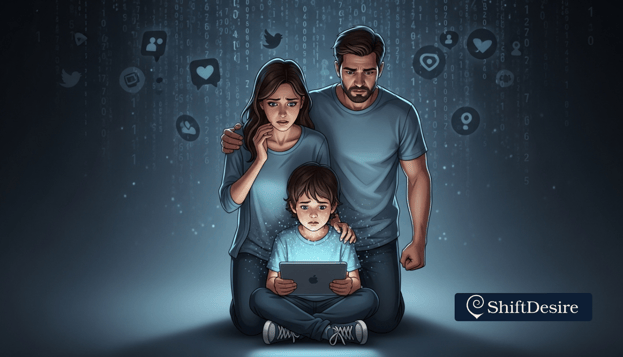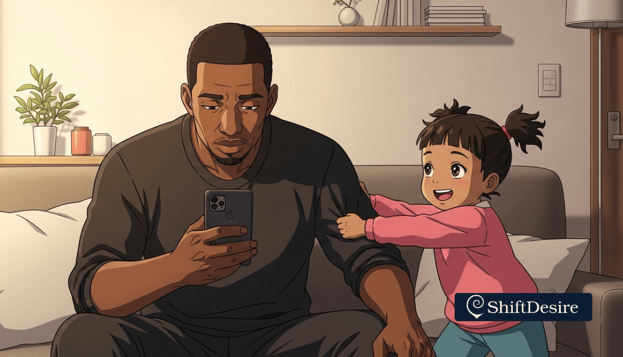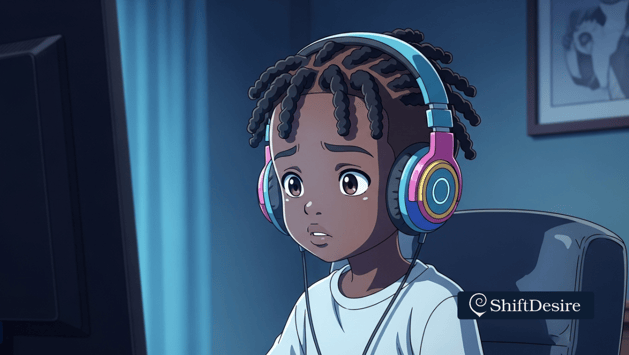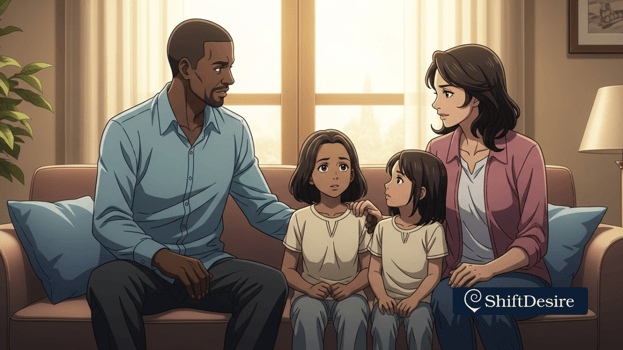The Digital Pedophilia Trap: What Most Parents Don’t Know (But Should)
By–Sevs Armando – ShiftDesire


A Silent Threat No One Warned Her About...
Jessica thought she was a good mom. No—she knew she was.
She monitored screen time, taught her 10-year-old son about “stranger danger,” and kept parental controls on his tablet. Safe... right?
Until one day, during dinner, her son innocently asked:
“Mom… what does ‘OnlyFans’ mean?”
Her heart sank.
A word he should’ve never heard. A concept no child should ever know.
It was a meme... on a YouTube video labeled “for kids.”
That moment shattered Jessica’s illusion of safety.
And she’s not alone.
The Invisible War for Childhood Innocence
Modern parents are fighting an invisible enemy.
An enemy hidden inside:
Harmless-looking cartoons
Popular TikTok trends
YouTube thumbnails
Gaming chats
Even ads in children’s apps
It’s the digital pedophilia trap: the normalization of sexual content in media, grooming behaviors disguised as humor, and hypersexualized images slipping into children's screens daily.
This isn’t fear-mongering. It’s the digital reality.
How Does This Happen Without You Noticing?
1. Sexual Content Hidden in Plain Sight
Harmless songs suddenly reference OnlyFans, body parts, or adult behaviors.
Dance trends normalize twerking and suggestive moves—even among toddlers on TikTok.
YouTube’s algorithm sometimes pushes “borderline” content masked as humor or challenges.
✅ What to Do:
Audit your child's YouTube subscriptions and TikTok feed regularly.
Replace unrestricted YouTube with YouTube Kids — but still check what’s suggested.
Teach kids how to report content they don’t understand.


2. Gaming: The New Playground for Predators
Games with chat features like Roblox, Fortnite, or Discord expose kids to strangers.
Predators disguise themselves as peers, slowly grooming through compliments, gifts, and private chats.
“You’re so mature for your age.”
“Let’s keep this our little secret.”
These are grooming red flags.
✅ What to Do:
Disable in-game chats where possible.
Use parental monitoring tools like Bark, Qustodio, or Microsoft Family Safety.
Have weekly open conversations about online friendships.


3. Screen Addiction Weakens Boundaries
The longer kids stay online, the more numb they become to inappropriate content.
Screen addiction rewires the brain’s reward system, making shock content feel... normal.
✅ What to Do:
Implement tech-free zones (especially bedrooms).
Introduce “digital detox” weekends—replace screens with real-world adventures.
Model healthy phone use as a parent.
4. The Normalization of Hypersexual Culture
TV shows, influencers, and even clothing brands sexualize children subtly but consistently.
What was “adult content” 10 years ago is now trending for 8-year-olds.
✅ What to Do:
Actively discuss media literacy. Teach kids the difference between performance and reality.
Curate shows, music, and content together. Don’t leave it to the algorithm.
Follow family-safe influencers and creators.


Signs Your Child Might Be at Risk (And What to Watch For)
🚩 Behavior Changes:
Sudden secrecy
Increased anger when asked to put away devices
Laughing at jokes they shouldn't understand
🚩 Language Shifts:
Using terms that feel too mature
Asking about body parts, OnlyFans, or adult topics
🚩 Isolation Online:
Deleting chat histories
Wanting more privacy than usual
Staying up late with screens
✅ Immediate Steps:
Don’t react with punishment—react with curiosity. Ask “Where did you hear that?”
Investigate without shame or blame.
Rebuild trust. Your child is a victim of the digital system—not the cause.
7 Powerful Ways to Protect Children Online
1. Start Open, Honest Conversations Early
Don’t wait until “something happens.” Normalize digital talks like you do with stranger danger.
2. Set Boundaries Without Shame
Explain why certain content is dangerous. Kids comply better when they understand.
3. Use Parental Controls (But Don’t Rely Solely on Them)
Tools help, but nothing replaces active parenting.
4. Limit Screen Time, Expand Real Life
More nature, sports, creativity. Less dopamine from endless scrolling.
5. Model What You Preach
Kids copy us. If they see us glued to phones—they learn that’s normal.
6. Teach Digital Literacy
Equip them to spot manipulation, grooming, and fake news.
7. Join Communities of Aware Parents
Support matters. Join Facebook groups, follow experts, and share resources.


This Isn’t About Fear. It’s About Freedom.
The internet isn’t going away. And neither are the dangers.
But here’s the truth no one tells you: You are your child’s best protection.
Not an app. Not the school. Not the government.
It’s you—present, aware, informed.
Every conversation, every limit set, every moment offline is an act of protecting childhood innocence.
